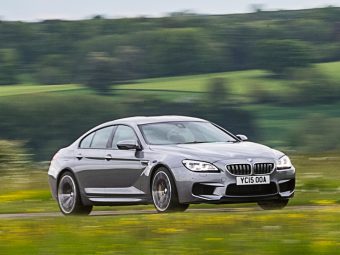In my opinion, there is only one electric car brand that you should consider if you are enticed by the idea of switching to electric vehicles: Tesla. Tesla designs and builds the most efficient EVs on the market and boasts by far the best supercharging network, period. Forget about European and American legacy car manufacturers whose electric car offerings are merely attempts to greenwash their image, nothing more.
However, Chinese EV manufacturers are making strides, emerging as world leaders in EV technology. This technological leap is evident in models like the Polestar 2, which is now beginning to challenge Tesla’s supremacy. Polestar, owned by Chinese automaker Geely, is represented as a thoroughly European brand.

Yet, there is a downside: Polestar sales are currently declining. This is not surprising considering the company has relied solely on one model to generate revenue. While more models are in development, for now, the Polestar 2 is akin to the boy on crutches following the Pied Piper. He may struggle to keep up, but at least he survives to witness the evolution of electric cars.
Model Range
The Polestar 2 is currently available in four model derivatives: the Standard Range Single Motor, Long Range Single Motor, Long Range Dual Motor, and Long Range Dual Motor Performance. Prices start from £43,950 and rise to £57,000 for the flagship performance model.

The entry-level Standard Range Single Motor now boasts a 69kWh battery, delivering an extended range of up to 339 miles (up from 297), alongside a motor output of 268bhp (up from 228bhp).
In contrast, the Long Range Single Motor model is equipped with an upgraded 82kWh battery, achieving an impressive 406-mile range, while power output increases to 295bhp.

Finally, the top-tier Long Range Dual Motor variant incorporates electric motors on both the front and rear axles, offering up to 368 miles of range. With a power output of 416bhp split evenly between the front and rear (50:50), it delivers addicitve acceleration despite its 2.1-tonne weight.
The Exterior
No complaints from me.

The Interior
The interior embraces a minimalist design philosophy and offers great build quality, but it does not necessarily incorporate the best materials. The buttress support on the flying console could have been lined with sustainable leather or Alcantara, which would have elevated the interior quality levels.

The door bins are made of hard, scratchy plastic with no felt lining. And that’s about it. Interior comfort levels are decent, with more than enough room in the front and even for rear-seat passengers.

Practicality is significantly boosted by the rear hatch opening, and the frunk boosts practicality. Polestar is Volvo’s sister brand, so much of the switchgear is borrowed from Volvo, although there are no buttons for the heating controls, which are accessed through the infotainment system or by using the incredibly accurate voice command.

While Apple CarPlay is offered, and I am an Apple user, I don’t use it, preferring instead to use the Polestar’s infotainment system because it runs off Android’s operating system and features many of the apps accessed on my iPhone.
The Range
I tested the Long Range Standard mode, which incorporates an 82kWh battery pack and rear-wheel drive. This configuration provides up to 295bhp and 406 miles of range. However, the range is based on an outdated method of lab testing used by all car manufacturers. The WLTP test cycle has become nothing more than a marketing opportunity and should be abandoned for being misleading.

In reality, the Volvo was good for 320 miles of real-world range with an efficiency rating of 3.7 kWh per mile, which is acceptable.

For comparison, the standard range Tesla Model 3 achieved 5 kWh/mile. During my combined journey consisting of city and dual carriageway (highway) driving at maximum speeds of 70 mph, I drove normally.
A range of 320 miles is decent for this current generation of electric car.
The Drive
Electric cars are heavy, and to counter that weight, car manufacturers often stiffen up the suspension, compromising driving dynamics. However, using a set of quality mechanical dampers can improve the ride without the need for an expensive and advanced suspension system to counter the stiff and hard ride.

Fortunately, the Polestar 2 had a comfortable and compliant ride, not too dissimilar to a standard Volvo gasoline saloon or estate. That is to say, the ride felt great. Although it’s not a sports car, the Polestar 2 is well-equipped to handle a blend of corners.
Straight-line performance is more than fast enough, with 0-62 mph achieved in… whatever. But what impressed me most was the one-pedal driving. The accelerator pedal had really great modulation that enables you to regenerate as if you’re using a brake. It gives you really good feedback and feels easier to use than the one in the Tesla Model 3.

The tire and road noise were bearable, but the sound insulation could be improved.
The Verdict
For years, I’ve been advocating that Tesla is the only electric car brand worth considering if you’re looking to transition from gasoline to electric. However, the Polestar 2 demonstrates that the competition is starting to raise the bar, thanks to advancements in Chinese EV technology that surpass what European car manufacturers are currently offering.

The real question is, why switch to electric? Why limit your total range and rely on an electric charging network infrastructure that is dysfunctional and inferior to that of Tesla’s? If range is important to you, stick to a gasoline car.
Having said that, an electric car offering 300 miles in this current generation is mighty tempting. Battery technology, efficiency, and range will improve over the next 5 years. The Polestar 2 is a compelling offering, but… that Tesla Model 3 Long Range is ever so slightly cheaper.
Which one to choose? For once I’m sitting on the fence. This is a coin toss decision.








